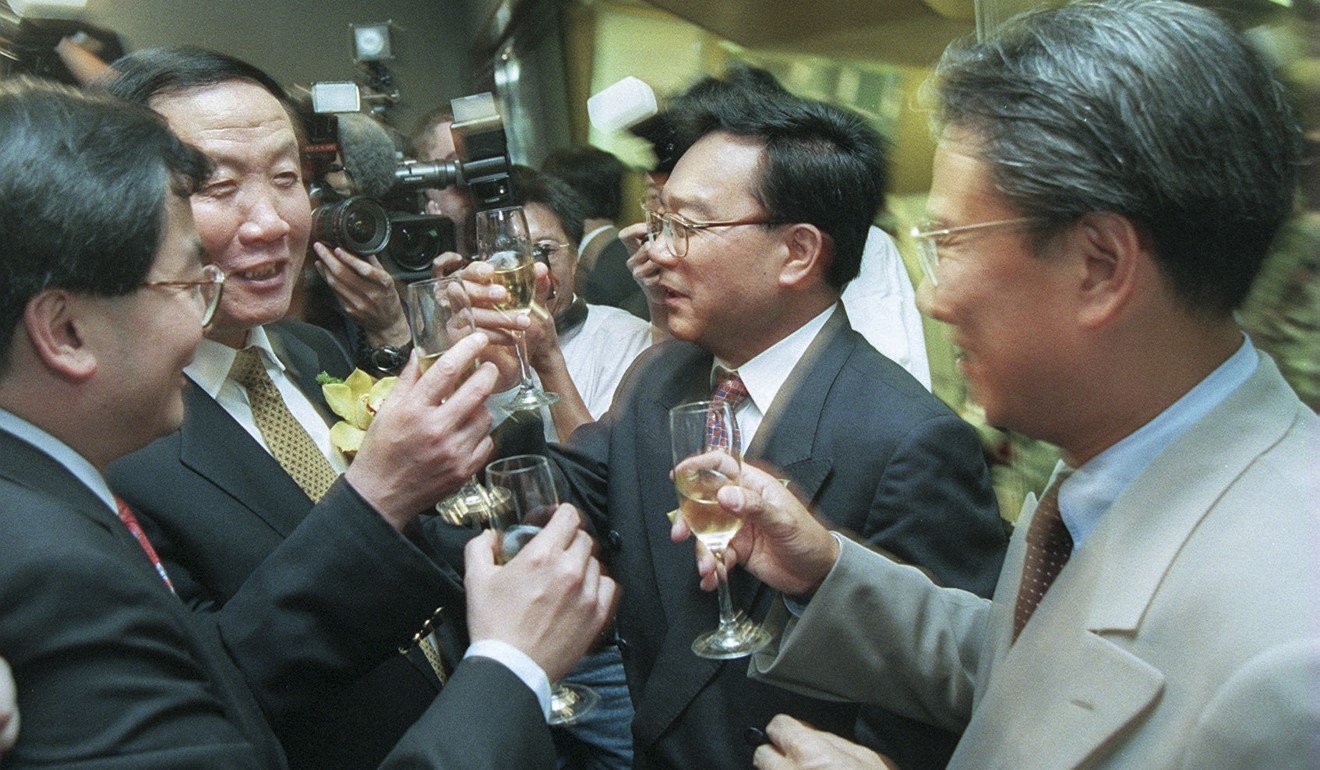
Beijing Enterprises’ makeover traces China’s evolution in capitalism over 20 years
The former “window company” of Beijing government has streamlined its business with diversified interests to become a specialised play
Beijing Enterprises made history 20 years ago when it debuted on Hong Kong’s stock exchange 1,300 oversubscribed, as the most sought-after initial public offering in the city’s history.
The IPO, which drew huge crowds of people scrambling for application forms underscored the average Hong Kong investor’s sentiments and the fever pitch frenzy for a large, well-connected mainland government-backed company.
Raising HK$2.5 billion, it was the biggest amount at the time from any listing of the so-called “red chips”, or overseas-registered mainland enterprises. It also made the only listed conglomerate of the Beijing government in Hong Kong the talk of the town, with just one month before the city’s sovereignty was returned to the mainland.
“Back then, the Beijing municipal government picked eight of its quality assets and put them into the newly set up Beijing Enterprises, and floated it,” chief executive Zhou Si told the South China Morning Post in an interview.

“The assets were well-liked by investors and the company’s listing was hugely successful.”
Today, there are close to 150 “red chips” listed in Hong Kong, either incorporated in the city or overseas.
The assets were well-liked by investors and the company’s listing was hugely successful
Shares of Beijing Enterprises, which attracted subscription 1,276 times the number of shares offered to Hong Kong investors, surged 222 per cent from the IPO price of HK$12.48 to close at HK$40.2 on their first day of trading.
Two decades later, after multiple boom and bust cycles, its share price ended Friday at HK$42.70, only over half that of its all-time high of HK$77.80 seen in late 2013.
It is fetching around 7.3 times this year’s forecast earnings, a fraction of the 19.4 times it debuted at, and half that of current valuation of the benchmark Hang Seng China-affiliated Corporations Index that track red chips.

“Window firms with operations in multiple industries have long lost their pre-eminence as investors prefer specialised firms that are easier to understand and value,” said Kenny Tang Sing-hing, chief executive of Junyang Securities. “Conglomerates generally attract valuation discounts.”
From the shares issuers’ perspective, a red chip listing is preferred over a floatation of an H share – a mainland-registered firm with mainland assets.
Window firms with operations in multiple industries have long lost their pre-eminence as investors prefer specialised firms that are easier to understand and value
This is because the red chip format has fewer restrictions and approval red tapes on post-listing shares issuance and original owners’ shares disposal.
However, tighter restrictions on the transfer of mainland state-owned assets to overseas vehicles in the past decade led to a sharp drop in new red chip listings , although mainland firms were still able to gain control of overseas already-listed vehicles and turn them into red chips via asset injection deals.
Data from the Hong Kong Exchanges and Clearing has also demonstrated the trend of H-shares gaining popularity at the expense of the red chips.
The number of red chips rose 149 per cent from 59 in 1997 to 147 last year, while that for H-shares leaped 459 per cent from 39 to 218.
H shares accounted for 36 per cent of the Hong Kong bourse’s total turnover last year, up from 8.5 per cent in 1997. In contrast, that of red chips plunged from 27.6 per cent to 14 per cent during the same period.
The gap had a lot to do with the jumbo floatations of state financial services and energy companies since 2000, and the divide is more accentuated by their market clout.
For Beijing Enterprises, the past 20 years also saw a complete makeover of its business.
“After the Asian financial crisis in the late 1990s, it dawned on us that having effective management influence over units in eight industries was quite difficult,” said Zhou, who joined the firm in 2005 from the municipal government.
“We also lacked a clear development direction which investors wanted us to have ... with our share price spiralling down, Beijing Enterprise lost its fund-raising capacity.”

In 2007, the municipal government injected a natural gas distribution business into Beijing Enterprise, which contributed substantially to business growth as the capital replaced coal with cleaner-burning natural gas as fuel for power and heat generation.
Having also bought in 2013 a major stake in China Gas, one of the nation’s largest city gas distributors, its natural gas business contributed 76 per cent of its total profit last year.
After the Asian financial crisis in the late 1990s, it dawned on us that having effective management influence over units in eight industries was quite difficult
Water, solid waste treatment and other environmental operations accounted for 23 per cent of the earnings, and the remainder was from its brewery operation.
After various asset transfer deals over the years, Yanjing Brewery, the nation’s fifth largest brewery, is the only one of the original eight business units that remains.
“Beijing Enterprises now has a clear positioning as a utilities company, with a focus on industries that bring environmental benefits,” Zhou said.
Last year, Beijing Enterprise clinched its biggest overseas acquisition to date. It agreed to pay 1.44 billion euros for a German company which owns 18 plants in Europe that burn municipal waste and generate power.

Although such projects are not technology-intensive, he said China could learn from Germany the skills and know-how in project management and resources integration, as well its craftsman spirit and quality culture.
Looking forward, Zhou said Beijing Enterprises hoped to reap more “synergies” by tapping the business relations it has build with the governments of a large number of Chinese cities, to which it can cross-sell its expertise in the environmental protection sector.
The firm is also studying opportunities to invest in water and waste treatment projects in various nations in South and Southeast Asia, where Beijing is supporting Chinese firms to finance and build infrastructure along the old land and maritime “Silk Road” trading routes, he added.


